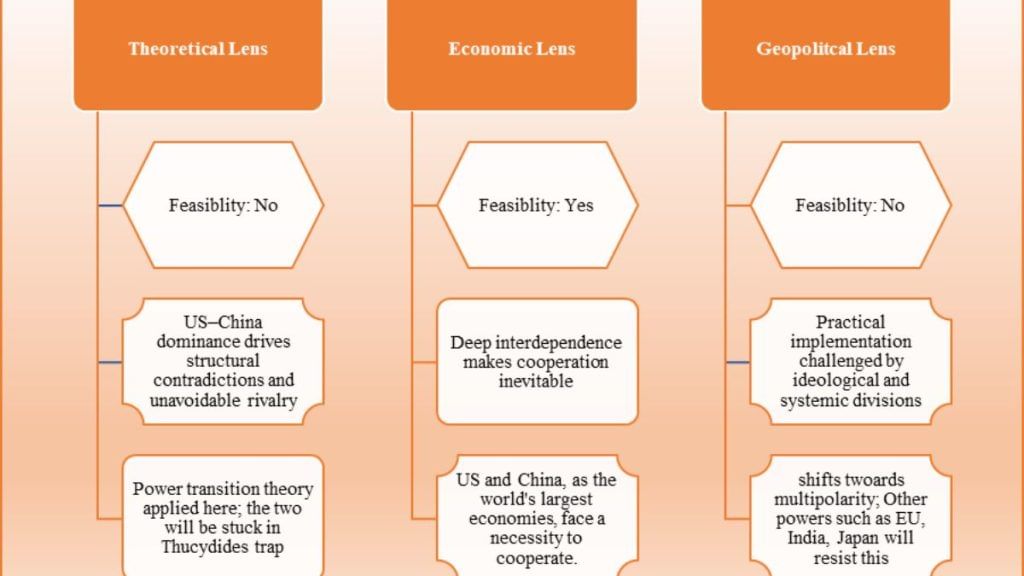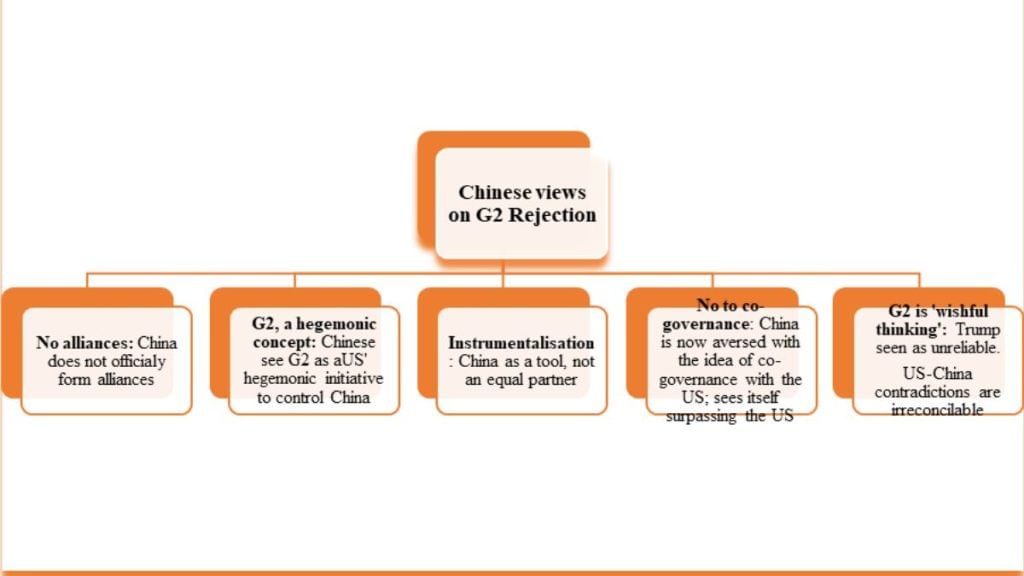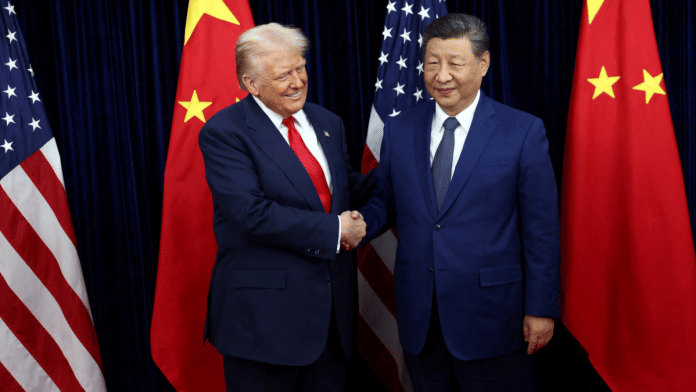Donald Trump’s recent remark on his meeting with Xi Jinping has sparked a flurry of commentary on Chinese social media. Weibo users are welcoming this “change” in American politics, while maintaining scepticism about any headway in the US-China relations.
The US President recently posted on Truth Social that he “had a truly great meeting” with Xi in Busan, South Korea, on the sidelines of the Asia-Pacific Economic Partnership, calling it “G2”. As reported by the Global Times, the Chinese President, too, spoke about the need for the two countries to be “partners and friends”.
“The US has become very polite!” commented a user on Weibo. The Chinese microblogging website saw several hashtags on the meeting, including ‘Trump says US-China cooperation can solve all the world’s problems’ (86 million views), ‘China-US consensus draws global attention’ (80,000), and ‘China and the US meeting each other halfway is the way to solve problems’ (168,000).
Feasibility and limits of Trump’s G2
A common refrain on the Chinese internet is this: ‘The US-China rivalry has officially ushered in the G2 era’, but Trump wants to save face, while China seeks substance.
Trump’s description of the meeting as G2 is seen as a potential win-win in Chinese academic circles. Shen Yi, Assistant Dean of the School of International Relations and Public Affairs, Fudan University, noted that it signals a space where China’s terms of engagement might be accepted. Jin Canrong, Professor at Renmin University, noted that the two sides are exploring resolution through dialogue following a period of tense confrontation, described the Xi-Trump meeting as “an important development” that raises new expectations for China-US relations. He added that Trump’s “G2” reference implicitly acknowledges China and the US as equal major powers, even if Beijing does not formally endorse the concept.
A Chinese commentator assessed the feasibility of a G2 through theoretical, economic, and geopolitical lenses. China and the US, as the world’s two largest economies, now anchor global affairs. In 2024, China’s GDP reached roughly 75 per cent of the US’s, with the two accounting for over 40 per cent of global GDP. Both nations dominate R&D, patents, and military spending, together making up nearly half of global defence expenditure.
In theory, the G2 reflects this reality of global power. But practical implementation remains difficult due to ideological, geopolitical, and systemic divisions. The concept draws on “power transition theory” and raises the question of whether the two powers can avoid the “Thucydides Trap” through competitive cooperation. Economically, cooperation is unavoidable, given deep interdependence: China’s industrial base as well as market complements America’s innovation and financial leadership.
Even at the height of the trade war, US-China trade reached record highs. Geopolitically, the commentator warned that the G2 concept faces resistance amid a shift towards multipolarity, with other powers, including the EU, Russia, India, and Japan, opposing a US-China duopoly and a bipolar world.

Huang Jing, Distinguished Professor at Shanghai International Studies University, framed Trump as a politician under pressure. With the 2026 midterms looming, if Republicans lose Congress, Trump faces a precarious future. In this context, he is eager to “deliver tangible results,” particularly in resolving the Russia-Ukraine war and securing a US-China agreement to showcase his leadership.
Meanwhile, Chinese experts note that China possesses its own leverage. Yao Ying, Dean of the Dishui Lake Advanced Institute of Finance at Shanghai University of Finance and Economics, emphasised that China has multiple cards to play, a view echoed by Huang Jing. A Weibo post captured the sentiment, stating that China will not ‘co-govern the world’ with the US, signalling scepticism toward any G2 alliance”.
Also read: Mamdani signals a shift in American politics. And how immigrants see themselves in it
Trump seen as untrustworthy
Is a G2 really on the horizon? Many Chinese internet users remain doubtful. A vlogger on Bilibili dismissed it as a show; another called it “intentional malice” with no real benefit”. On Zhihu, users observed that every decade, American leaders reiterate G2 rhetoric, Obama proposed it, Trump too, but outcomes are minimal, serving more as delaying tactics than substantive agreements.
Some commentators see potential traps: superficially, the US appears to recognise China’s strength, but in reality, it may be setting pitfalls. A Baijiahao article warned that adopting a G2 model could make China “a complete US’ subordinate” undermining its path to equality or global leadership. Another commentator cautioned that Washington’s G2 language primarily reflects strategic recognition of Beijing’s strength, not genuine cooperation.
A Weibo post by Beijing-based publication, US–China Focus emphasised that China prioritises cooperation within multilateral frameworks and protects developing countries’ interests, but does not endorse the G2 label. A Baijiahao analysis explained: China does not form exclusive alliances, rejects hegemonic frameworks, and views the American G2 concept as self-serving. In this perspective, the G2 is aspirational US thinking, not a roadmap for China.
The central theme emerging from Chinese online discourse is that while Trump may now acknowledge China’s strength and treat it as an equal, this recognition is driven more by fear and strategic anxiety than by genuine intent for collaboration. The G2 is widely seen in China as an American concept, an initiative designed to monitor and constrain China’s rise rather than a framework for mutual partnership.

Many Chinese commentators insist that G2 is a non-starter for China, and that US–China relations will continue to be defined by competition, distrust, and rivalry rather than cooperation, where there is no space for G2. Crucially, China does not view itself as a co-governor of the world with the US. Instead, there is a growing confidence that China is on a trajectory to become the undisputed global leader, potentially surpassing the US across all domains.
Sana Hashmi is a fellow at Taiwan Asia Exchange Foundation. She tweets @sanahashmi1. Views are personal.
(Edited by Saptak Datta)







The G2 concept has been brought up by the US consistently since 2008 and China has always refused. This is nothing new.